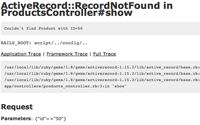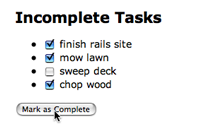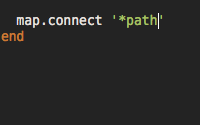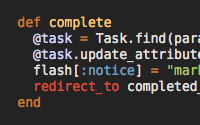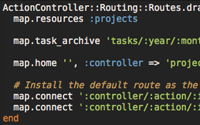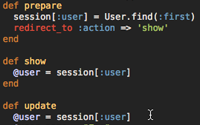Categories
- Active Record
- Active Resource
- Active Support
- Administration
- Ajax
- APIs
- Authentication
- Authorization
- Background Jobs
- Caching
- Code Walkthrough
- Controllers
- Debugging
- Deployment
- eCommerce
- Forms
- Mailing
- Models
- Performance
- Plugins
- Production
- Rack
- Rails 2.0
- Rails 2.1
- Rails 2.2
- Rails 2.3
- Rails 3.0
- Rails 3.1
- Rails 3.2
- Rails 4.0
- Refactoring
- Routing
- Search
- Security
- Testing
- Tools
- Views
Applied Filters:
Controllers x
Handling Exceptions
When an exception is raised in development you get the full error along with the stack trace. In production, only a simple message is displayed. Learn why this is and how to customize the handling of exceptions.
(8 minutes)
Update through Checkboxes
See how to select multiple items using checkboxes and perform an action on the selected items in this episode.
(10 minutes)
Catch-all Route
Sometimes you need to add complex/dynamic routes. This is often impossible to do in routes.rb, but do not worry. It can be accomplished with a catch-all route. See how in this episode.
(5 minutes)
Multibutton Form
If you have a form with multiple buttons, you can detect which button was clicked by checking the passed parameters. Learn how in this episode.
(4 minutes)
Custom REST Actions
REST adds many constraints. It restricts your controllers to seven actions. Normally this is okay, but sometimes you need to add your own custom actions. Learn how in this episode.
(8 minutes)
Named Routes
When you add a custom route, make it a named route so you have url helper methods to easily link to that new route. See episode for details.
(6 minutes)
Dangers of Model in Session
Be careful when storing a model in a session. It will behave differently than you expect and can easily get out of sync with the database. Instead of storing the model directly in the session, store the id to the model and use that to fetch it from the database.
(5 minutes)

